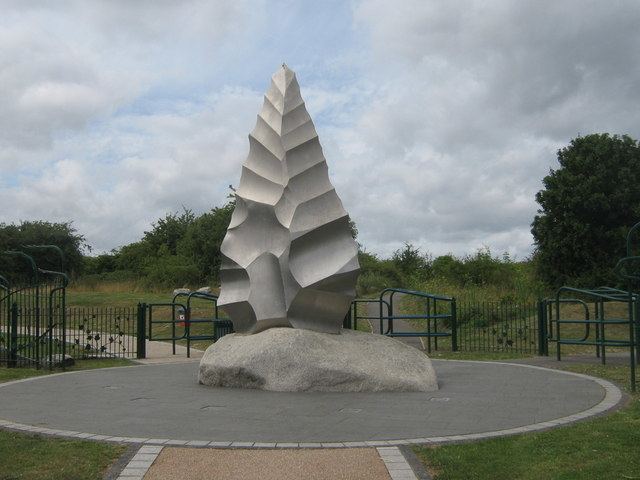Address Swanscombe DA10 0DH, UK | ||
 | ||
Hours Open today · Open 24 hoursSundayOpen 24 hoursMondayOpen 24 hoursTuesdayOpen 24 hoursWednesdayOpen 24 hoursThursdayOpen 24 hoursFridayOpen 24 hoursSaturdayOpen 24 hoursSuggest an edit Similar Darenth Country Park, Cyclopark, Northfleet Urban Country P, Beacon Wood Country P, Swanley Park | ||
That history guy episode 1 swanscombe heritage park
Swanscombe Heritage Park is a national nature reserve and a Site of Special Scientific Interest near the village of Swanscombe in north-west Kent, England, at the Thames east of London. The park lies in a former gravel quarry, Barnfield Pit, and is very close to the Baker's Hole site to Swanscombe's east.
Contents
The area was already famous for the finds of numerous Palaeolithic-era handaxes—mostly Acheulean and Clactonian artifacts, some as much as 400,000 years old—when in 1935/1936 work at Barnfield Pit uncovered two fossilised skull fragments. These fragments came to be known as the remains of Swanscombe Man, a name they retained despite a re-identification that established that they had belonged to a young woman. These remained the oldest human fossils discovered anywhere in the UK, until the 1994 and 1995 discoveries of 500,000-year-old human leg bones and teeth at Boxgrove.
The Swanscombe skull has been identified as Homo heidelbergensis. It dates to the Hoxnian Interglacial 400,000 years ago, and since this follows the extreme Anglian ice age which drove humans out of the British Isles, the Swanscombe people must represent a re-colonisation.
The skull fragments were found in the lower middle terrace gravels at a depth of almost 8 metres beneath the surface. They were found by Alvan T. Marston, an amateur archaeologist who visited the pit between quarrying operations to search for flint tools. A third, matching fragment of the same skull was found in 1955 by Bertram and John Wymer.
Further excavations, carried out between 1968-1972 by Dr. John d'Arcy Waechter, uncovered more animal bone and flint tools, and established the extent of a former shoreline that the bones were found on.
Most of the bone finds are now in the Natural History Museum in London, with the stone finds at the British Museum. The other key paleolithic sites in the UK are Happisburgh, Pakefield, Pontnewydd, Kents Cavern, Paviland, and Gough's Cave.
